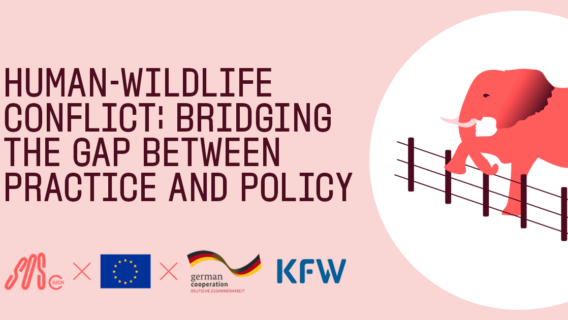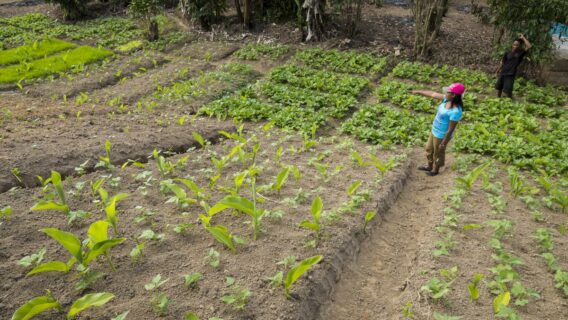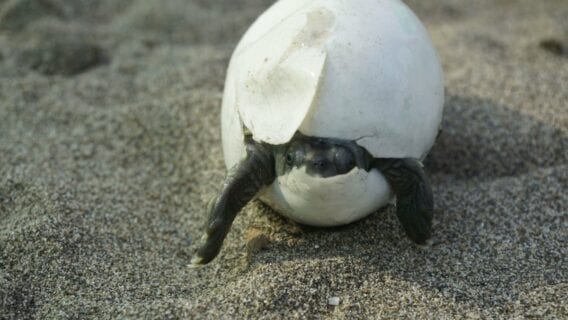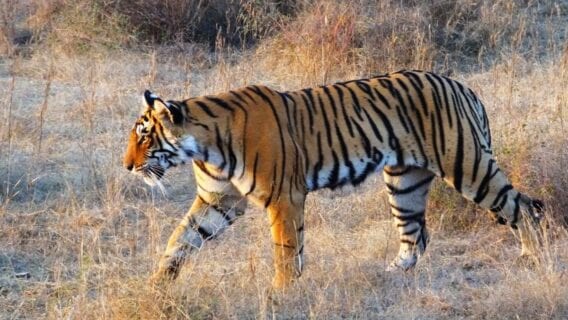Meet Tsinjo, an Endangered Aye-aye in the Forests of Torotorofotsy
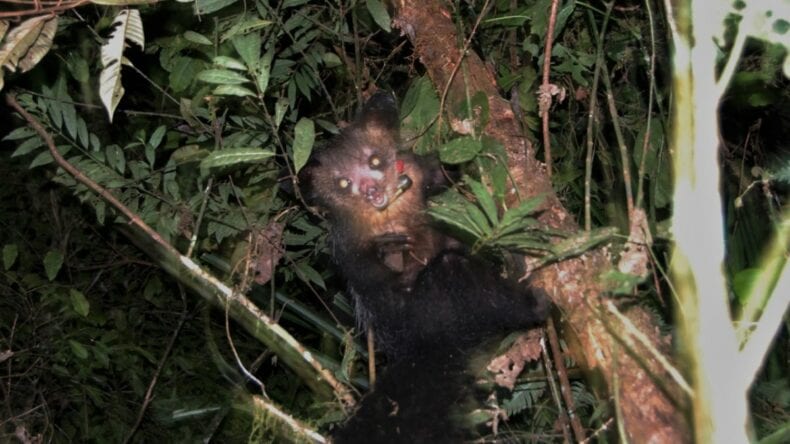
In late July 2020, we got news that Tsinjo changed her usual routine of switching nests and settled into just one special spot high up in the canopy. This made us hopeful since this is what she does when she’s getting ready to have a baby. She’s had four infants in the time we’ve known her, so we’ve become familiar with her routines and know that she’s an excellent mother.
Days later, we received the best baby announcement from Jeannin Nicolas, the Torotorofotsy Site Supervisor: “Before [Tsinjo] left the nest yesterday, we heard the voice of a baby.” The team believes this new aye-aye infant was born on July 24, 2020. Yet it was nearly one month later, August 19, when late in the evening they saw the baby emerge from the nest for the first time. It briefly rested on a branch next to its mom before scurrying back inside. Tsinjo hides her babies well, and we count ourselves lucky to have seen this baby as early as we did. By the first week of September, the baby was moving around the tree, but never traveling far from the nest. Although it stayed close to its mom, Tsinjo was unable to save her baby from an attack. On Monday, September 14, the baby was found dead at the base of the tree while Tsinjo was fighting off a male aye-aye up near the nest. Although the male aye-aye was following its instincts and the death was part of nature’s scheme, the entire team was crestfallen at the loss of life.
Aye-ayes are an Endangered species that lead solitary lives. Mothers only give birth to one infant at a time and nurture it for nearly two years before the baby begins its independent life. We have observed numerous infants born to female aye-ayes in our monitoring programmes, but rarely have we seen them reach maturity and establish their own territories. Though Tsinjo lost her newborn, her adult son Lafitte is two years old and living independently. He has yet to move far from his mom, but he is showing all the behaviors and skills that aye-ayes need to survive and we are hopeful that he will continue to thrive.
Aye-ayes, like Tsinjo and Lafitte, can occupy vast territories with females using up to 1’000 ha in a season while males may range over more than 2’000 ha! Therefore, expansive forests such as Torotorofotsy provide vital habitat allowing aye-ayes to move across large distances searching for food like wood-boring grubs and seeds. However, there are holes in this habitat’s fabric. We are working to patch these through the creation of a reforestation programme with support from IUCN Save Our Species and through community outreach.
Our reforestation work is modeled after our project in Kianjavato where we’ve planted more than 3 million trees with thousands of community members. In Torotorofotsy, we’ll be working with a VOI which is an organization of locally elected members who oversee access to community-held resources like a forest. With VOI Fitama, we will determine exactly where to plant the first trees. Some of these trees are selected to meet the needs of local people, such as timber and fuel wood, while other plant species are grown from seeds taken out of lemur feces to ensure that our reforestation efforts also provide wildlife habitat. Additionally, we’re looking forward to training local people to participate in patrols to curb illegal forest exploitation and further discuss community needs.
This project is co-funded by IUCN Save Our Species. The contents of this article are the sole responsibility of Omaha’s Henry Doorly Zoo and Aquarium and do not necessarily reflect the views of IUCN.

